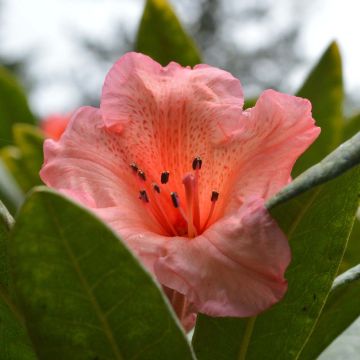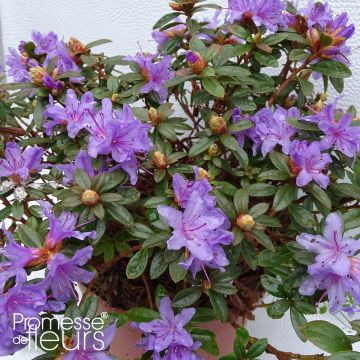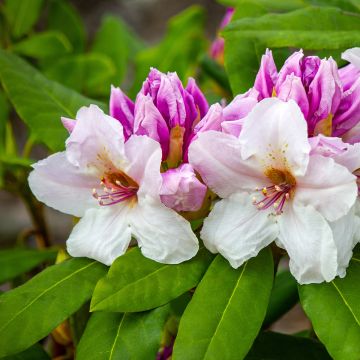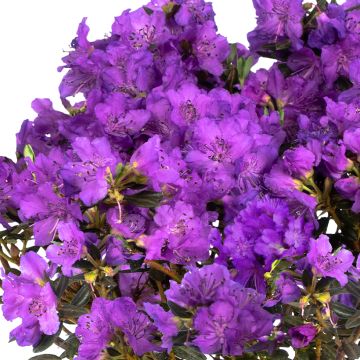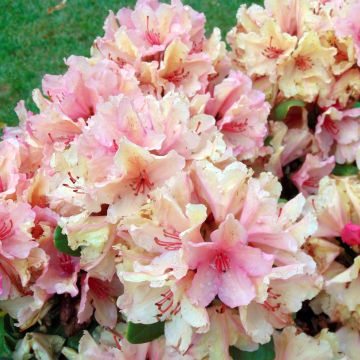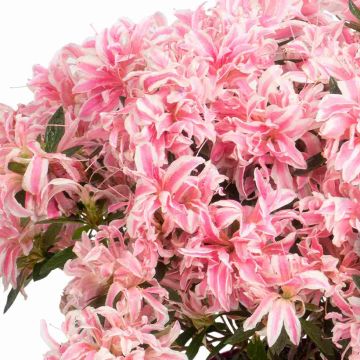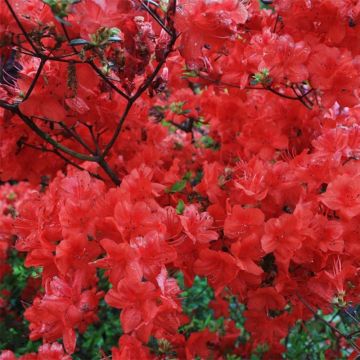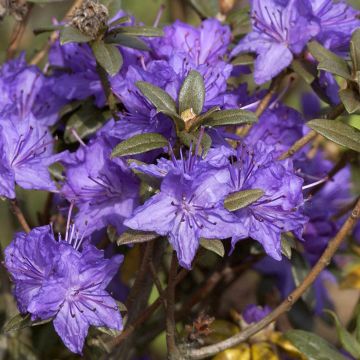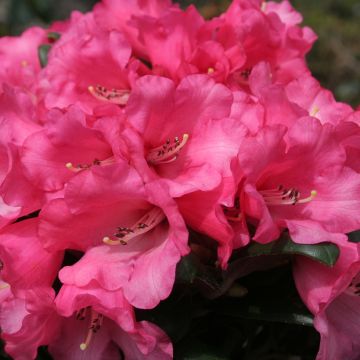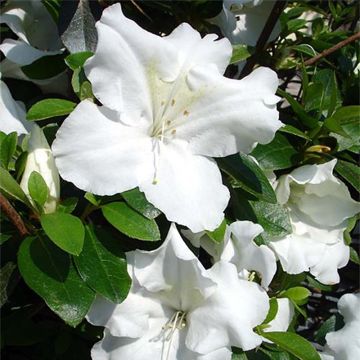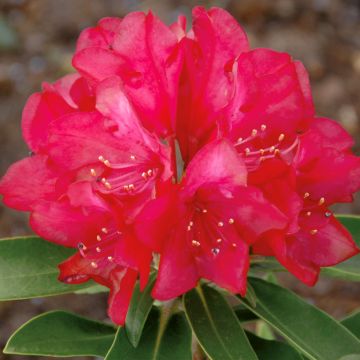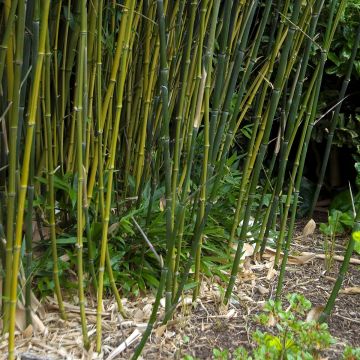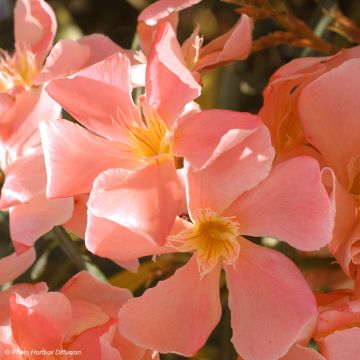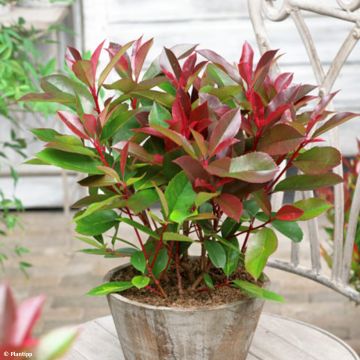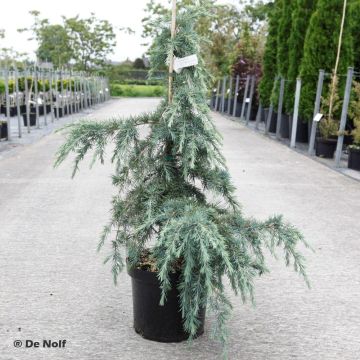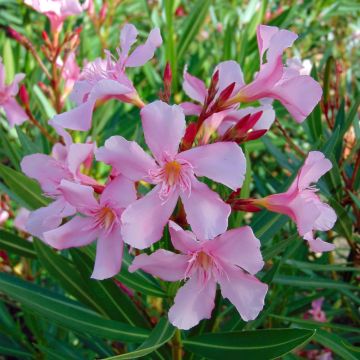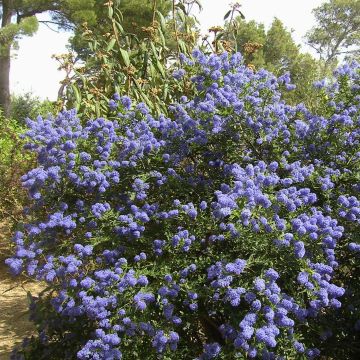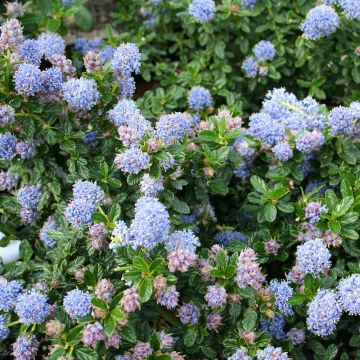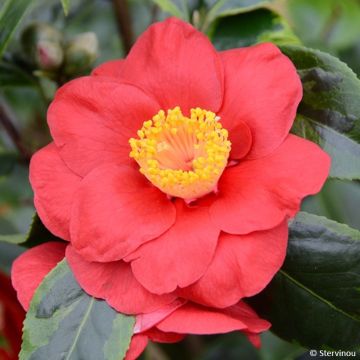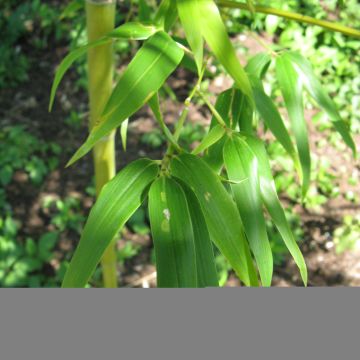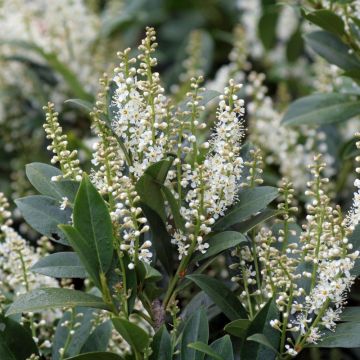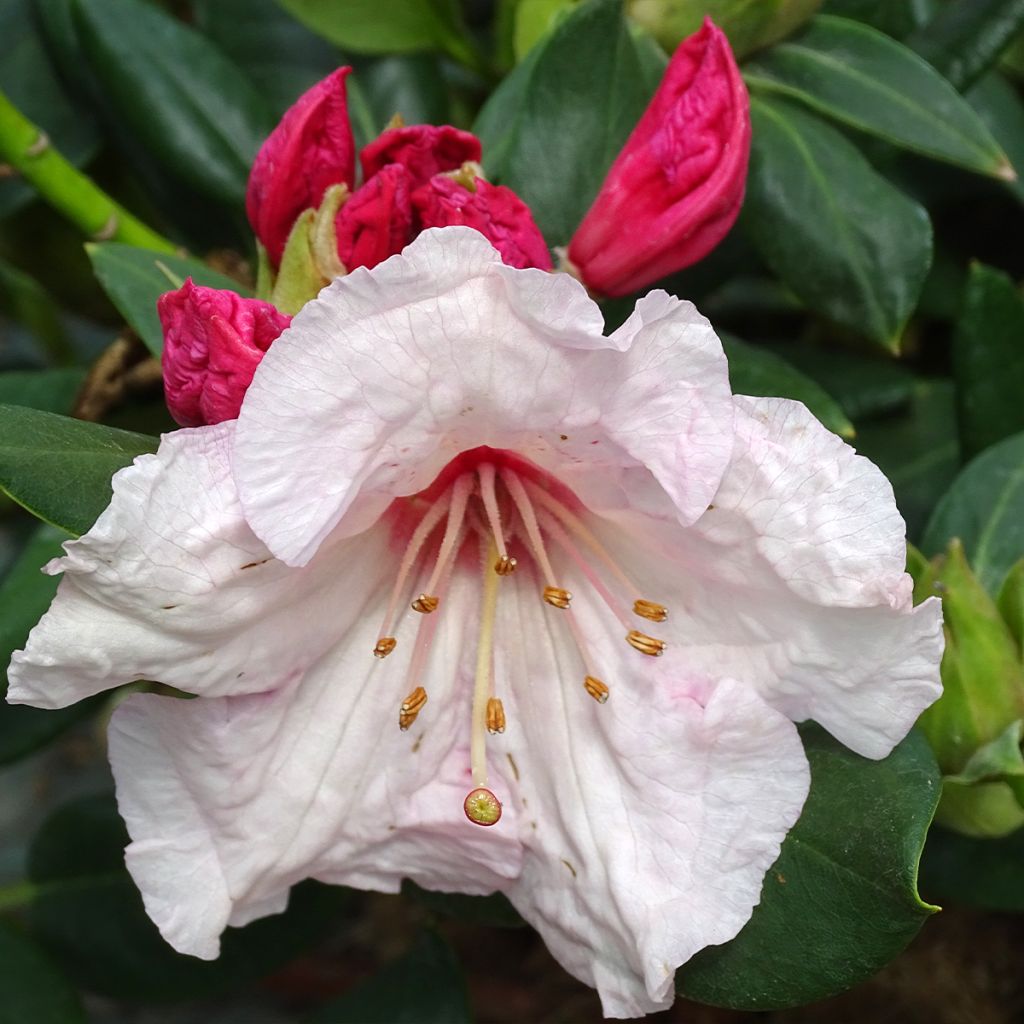

Rhododendron Virginia Richards - Petit Rhododendron
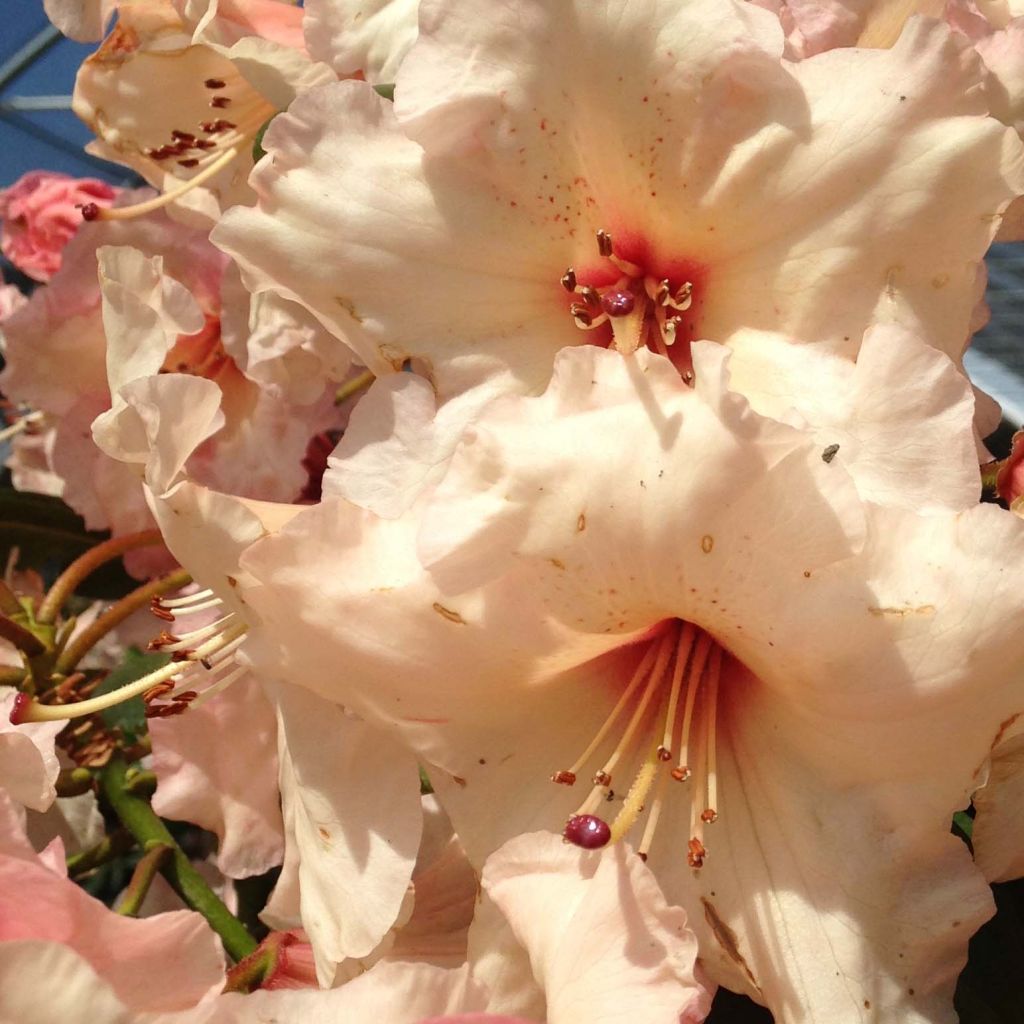

Rhododendron Virginia Richards
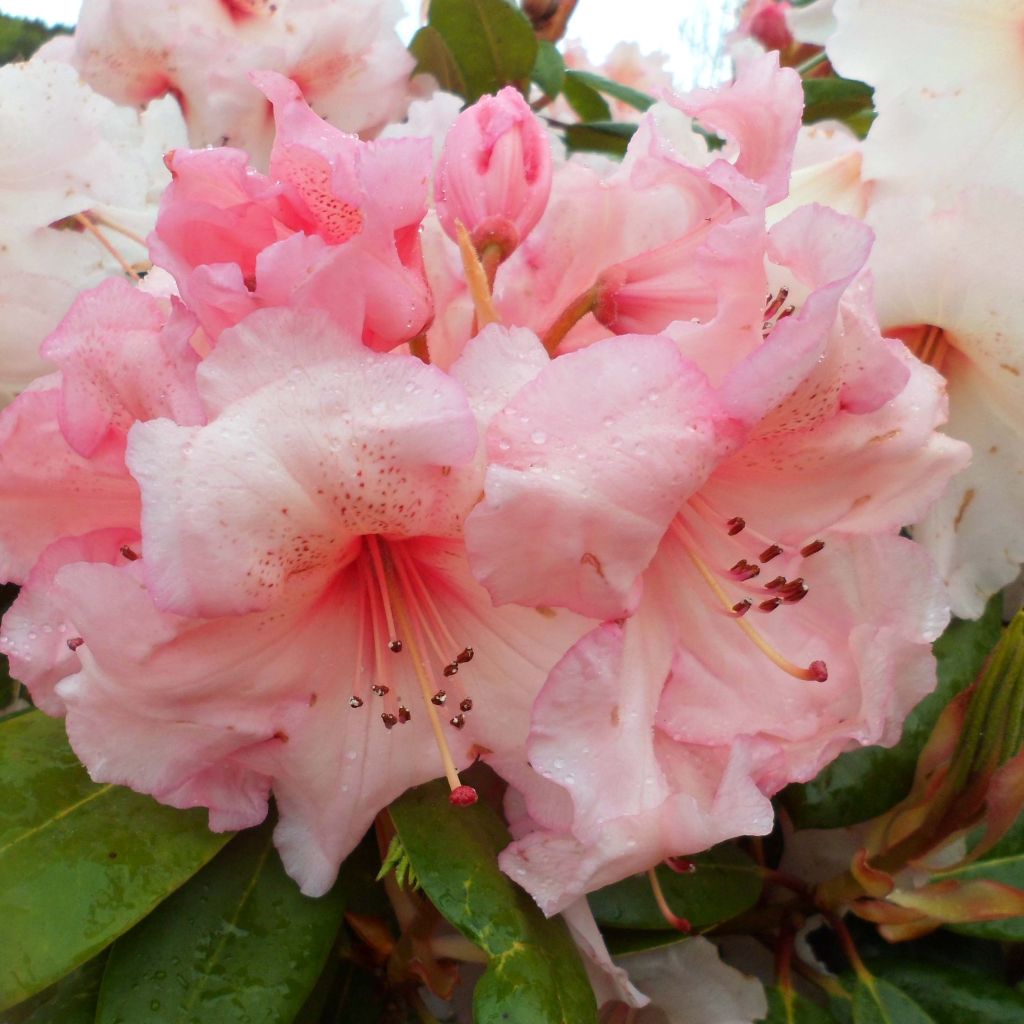

Rhododendron Virginia Richards
Rhododendron Virginia Richards
Rhododendron Virginia Richards
Rhododendron
Why not try an alternative variety in stock?
View all →This plant carries a 24 months recovery warranty
More information
We guarantee the quality of our plants for a full growing cycle, and will replace at our expense any plant that fails to recover under normal climatic and planting conditions.
From €5.90 for pickup delivery and €6.90 for home delivery
Express home delivery from €8.90.

Does this plant fit my garden?
Set up your Plantfit profile →
Description
Rhododendron 'Virginia Richards' is undoubtedly a delightful rhododendron that will quickly become the star of an ericaceous bed or a balcony! Of medium stature, with a compact growth habit and dressed in dense and glossy foliage, this variety offers an extraordinary flowering in April-May: its pink buds are accompanied by flowers that gradually transition from salmon pink to pale yellow, punctuated with a redder heart, forming a tenderly multi-coloured bouquet. A natural growth habit, beautiful evergreen foliage, and marvellous flowering are the assets of 'Virginia Richards', which will fully showcase its potential in a light, moist soil devoid of limestone, under a humid climate.
Resulting from the crossbreeding of several species, the Rhododendron 'Virginia Richards' is a plant from the Ericaceae family, almost exclusively adapted to acidic soils. It is a relatively hardy hybrid variety with large flowers. It forms a bushy and well-branched bush, rather rounded, not exceeding 1 m (3 ft) in all directions, and bears ovate to elliptical evergreen leaves, shiny green, fuzzy and lighter on the underside. Its growth is quite slow, its growth habit naturalistic, and its foliage elegant, so it has a real presence in the garden all year round. Nevertheless, it is in April-May that it stands out thanks to its remarkably generous and rich flowering with warm and soft nuances. The bell-shaped flowers, 11 cm (4 in) in diameter, are grouped in clusters of 12 at the end of numerous stems. From fuchsia pink buds, they open into a warm pink tone gradually turning to orange, apricot, and peach pink, lightening at full bloom to cream yellow with a red centre.
This modest-sized bush will be ideal as a border plant or in a container, provided it benefits from suitable soil and climate; "rhodos" are as charming as they are exclusive! Its colour blends well with the pastel shades of hydrangeas (a wide choice, from white to pink, and even blue), the colourful young shoots of Pieris, and red-purple and garnet hues, such as those of the foliage of Japanese maple 'Atropurpureum' or the flowers of Loropetalum chinense 'Fire Dance'. Its warm-toned flowering complements that of mauve rhododendrons like 'Moerheim'. For a scene inspired by contemporary style or a garden with a minimalist style, it is best to associate it with white flowers and foliage, such as a white Bleeding Heart and the foliage of the copper fern (Dryopteris erythrosora).
Report an error about the product description
Rhododendron Virginia Richards in pictures
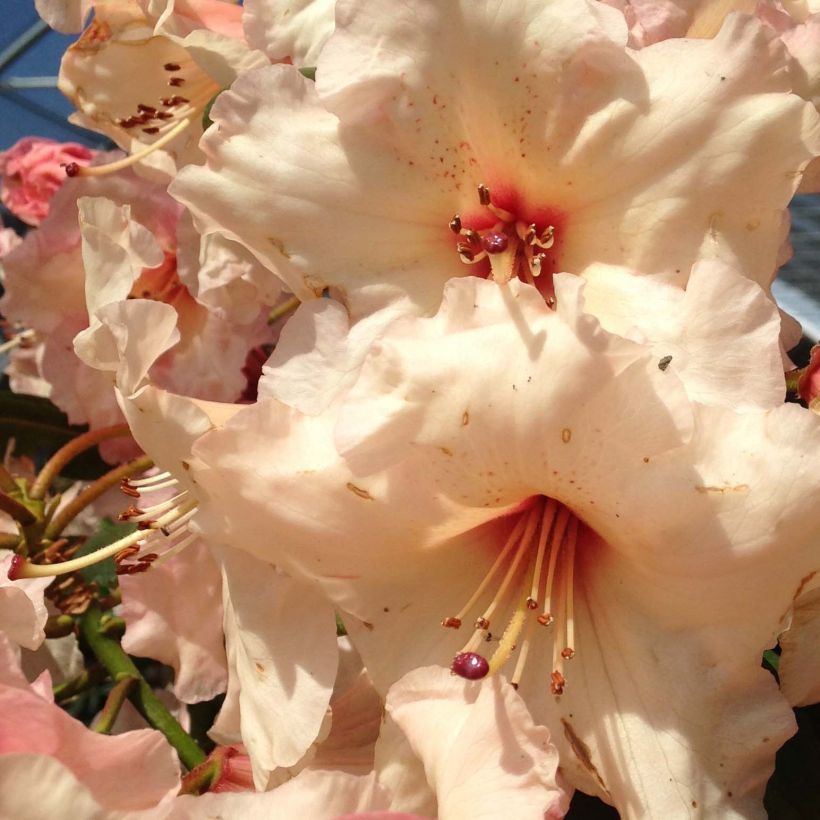

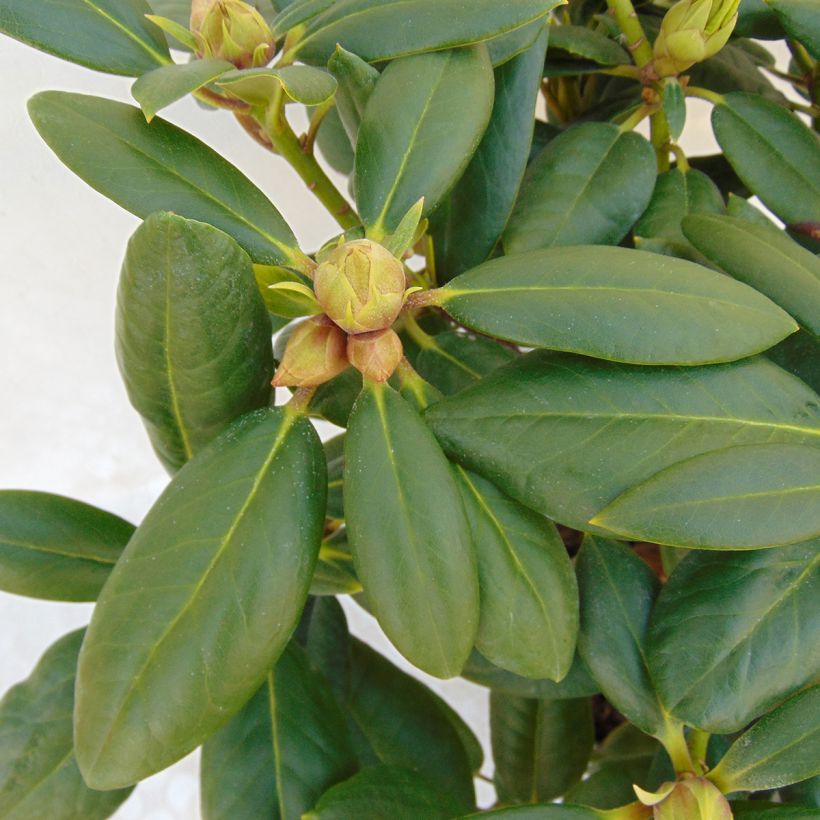

Plant habit
Flowering
Foliage
Botanical data
Rhododendron
Virginia Richards
Ericaceae
Rhododendron
Cultivar or hybrid
Other Small Rhododendron
Planting and care
Plant the Rhododendron 'Virginia Richards' in a semi-shade position, away from burning sun, protected from cold and drying winds, in a moist, humus-rich and light soil with an acidic tendency. Like all plants of heathland, it does not tolerate limestone soils or heavy soils saturated with water in winter. The cultivation of rhododendrons is disappointing in the long term on a limestone subsoil, even when providing them with a hole of ericaceous soil. Watering with hard water should be avoided.
Dig a hole three times larger than the pot volume. Soak the root ball in lime-free water and plant the bush at the level of the collar, in a mixture composed of leaf compost, gravel or pumice and loam soil. Water generously and keep the soil moist in summer with mulching. Azaleas and rhododendrons have a shallow root system, therefore, they fear long periods of drought, as well as waterlogged and heavy soils. That's why humus-rich soil and abundant watering during dry periods are recommended. In addition, this root system is not very strong, which is why it is essential to lighten heavy soils with draining materials (gravel, pumice, clay pellets) at planting.
Apply a mulch of crushed pine bark at the base of the bush every spring to keep the soil moist while maintaining an acidic pH. Maintenance consists of cutting off faded flowers in summer and removing dead branches.
Azaleas and rhododendrons can sometimes be attacked by weevils that eat the edges of leaves and rootlets, as well as the famous "rhododendron beetle" which does not often cause severe damage. Yellowing of leaves (chlorosis) in Rhododendron indicates poor assimilation of iron in the soil and causes premature death of the plant. While limestone rising from deep layers of the soil is often the cause, poorly drained soil or a root ball planted too deeply can also explain this phenomenon.
Planting period
Intended location
Care
-
, onOrder confirmed
Reply from on Promesse de fleurs
Evergreen shrubs
Haven't found what you were looking for?
Hardiness is the lowest winter temperature a plant can endure without suffering serious damage or even dying. However, hardiness is affected by location (a sheltered area, such as a patio), protection (winter cover) and soil type (hardiness is improved by well-drained soil).

Photo Sharing Terms & Conditions
In order to encourage gardeners to interact and share their experiences, Promesse de fleurs offers various media enabling content to be uploaded onto its Site - in particular via the ‘Photo sharing’ module.
The User agrees to refrain from:
- Posting any content that is illegal, prejudicial, insulting, racist, inciteful to hatred, revisionist, contrary to public decency, that infringes on privacy or on the privacy rights of third parties, in particular the publicity rights of persons and goods, intellectual property rights, or the right to privacy.
- Submitting content on behalf of a third party;
- Impersonate the identity of a third party and/or publish any personal information about a third party;
In general, the User undertakes to refrain from any unethical behaviour.
All Content (in particular text, comments, files, images, photos, videos, creative works, etc.), which may be subject to property or intellectual property rights, image or other private rights, shall remain the property of the User, subject to the limited rights granted by the terms of the licence granted by Promesse de fleurs as stated below. Users are at liberty to publish or not to publish such Content on the Site, notably via the ‘Photo Sharing’ facility, and accept that this Content shall be made public and freely accessible, notably on the Internet.
Users further acknowledge, undertake to have ,and guarantee that they hold all necessary rights and permissions to publish such material on the Site, in particular with regard to the legislation in force pertaining to any privacy, property, intellectual property, image, or contractual rights, or rights of any other nature. By publishing such Content on the Site, Users acknowledge accepting full liability as publishers of the Content within the meaning of the law, and grant Promesse de fleurs, free of charge, an inclusive, worldwide licence for the said Content for the entire duration of its publication, including all reproduction, representation, up/downloading, displaying, performing, transmission, and storage rights.
Users also grant permission for their name to be linked to the Content and accept that this link may not always be made available.
By engaging in posting material, Users consent to their Content becoming automatically accessible on the Internet, in particular on other sites and/or blogs and/or web pages of the Promesse de fleurs site, including in particular social pages and the Promesse de fleurs catalogue.
Users may secure the removal of entrusted content free of charge by issuing a simple request via our contact form.
The flowering period indicated on our website applies to countries and regions located in USDA zone 8 (France, the United Kingdom, Ireland, the Netherlands, etc.)
It will vary according to where you live:
- In zones 9 to 10 (Italy, Spain, Greece, etc.), flowering will occur about 2 to 4 weeks earlier.
- In zones 6 to 7 (Germany, Poland, Slovenia, and lower mountainous regions), flowering will be delayed by 2 to 3 weeks.
- In zone 5 (Central Europe, Scandinavia), blooming will be delayed by 3 to 5 weeks.
In temperate climates, pruning of spring-flowering shrubs (forsythia, spireas, etc.) should be done just after flowering.
Pruning of summer-flowering shrubs (Indian Lilac, Perovskia, etc.) can be done in winter or spring.
In cold regions as well as with frost-sensitive plants, avoid pruning too early when severe frosts may still occur.
The planting period indicated on our website applies to countries and regions located in USDA zone 8 (France, United Kingdom, Ireland, Netherlands).
It will vary according to where you live:
- In Mediterranean zones (Marseille, Madrid, Milan, etc.), autumn and winter are the best planting periods.
- In continental zones (Strasbourg, Munich, Vienna, etc.), delay planting by 2 to 3 weeks in spring and bring it forward by 2 to 4 weeks in autumn.
- In mountainous regions (the Alps, Pyrenees, Carpathians, etc.), it is best to plant in late spring (May-June) or late summer (August-September).
The harvesting period indicated on our website applies to countries and regions in USDA zone 8 (France, England, Ireland, the Netherlands).
In colder areas (Scandinavia, Poland, Austria...) fruit and vegetable harvests are likely to be delayed by 3-4 weeks.
In warmer areas (Italy, Spain, Greece, etc.), harvesting will probably take place earlier, depending on weather conditions.
The sowing periods indicated on our website apply to countries and regions within USDA Zone 8 (France, UK, Ireland, Netherlands).
In colder areas (Scandinavia, Poland, Austria...), delay any outdoor sowing by 3-4 weeks, or sow under glass.
In warmer climes (Italy, Spain, Greece, etc.), bring outdoor sowing forward by a few weeks.


































